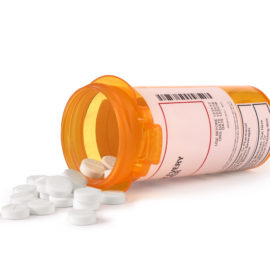Fentanyl withdrawal symptoms occur when someone who is dependent on a synthetic opioid like fentanyl stop using the drug or dramatically reduces their dosage. The symptoms of fentanyl withdrawal can manifest on a spectrum, varying from mild to severe.
In this blog, we will cover:
- What are the signs of fentanyl detox?
- Identifying fentanyl withdrawal symptoms
- How long does fentanyl withdrawal last?
- How to get treatment for the withdrawal symptoms of fentanyl
Get treatment for fentanyl addiction.
Fentanyl Withdrawal Signs
Detecting the early signs of fentanyl withdrawal is crucial in recognizing and addressing the challenging process of detoxing from fentanyl. By being aware of these signs, individuals and their loved ones can take proactive steps toward seeking appropriate support. Here are some early indicators that may suggest the onset of fentanyl withdrawal:
- Increasing drug cravings: A growing desire for fentanyl and a persistent urge to use the drug may become more prominent at the beginning of the fentanyl withdrawal timeline.
- Mood fluctuations: Noticeable shifts in mood – increased irritability, restlessness, or anxiety, for instance – may arise as the body begins to adjust to the absence of fentanyl.
- Initial physical discomfort: Individuals may experience mild physical symptoms, including muscle aches, headaches, and gastrointestinal disturbances, as their body starts to readjust without the presence of fentanyl.
- Insomnia or disrupted sleep patterns: Difficulty falling asleep or experiencing restless nights can be an early indication of withdrawing from fentanyl.
- Excessive yawning: Frequent and uncontrollable yawning can manifest as one of the early physical side effects of fentanyl withdrawal.
Fentanyl withdrawal effects may intensify over time, underscoring the importance of timely intervention and accessing appropriate treatment resources. If you or a loved one is experiencing fentanyl withdrawals, reach out to healthcare professionals or addiction treatment centers for guidance and assistance in navigating this challenging process.
Fentanyl withdrawal occurs due to the body’s adaptation to the presence of fentanyl, a potent opioid. When someone uses fentanyl regularly or in large amounts, their body becomes dependent on the drug to function normally. With continued use, the body adjusts its chemical balance and develops a tolerance to fentanyl, meaning that higher doses are required to deliver the same effects. When fentanyl use is abruptly stopped or significantly reduced, the body goes through a period of adjustment, leading to the presentation of withdrawal symptoms.
Fentanyl affects the central nervous system, especially the MOR ( mu-opioid receptors), which play a central role in governing pain relief, pleasure, and reward. When fentanyl is consistently present, these receptors become desensitized, and the body relies on the drug to maintain normal functioning. When fentanyl is suddenly removed, though, the MOR become unoccupied, triggering a cascade of physiological and psychological changes.
The withdrawal symptoms that emerge during fentanyl withdrawal are the body’s response to the absence of the drug. They can range from mild discomfort to severe distress, depending on factors such as the individual’s level of dependence, duration of drug use, and overall health. The symptoms typically mirror the opposite effects of fentanyl, as the body tries to regain its equilibrium (homeostasis).

Fentanyl Withdrawal Symptoms
Fentanyl withdrawal involves a range of physical symptoms that can vary in intensity and pose certain risks to individuals. Some of the physical symptoms experienced during fentanyl withdrawal include:
-
- Sweating: Profuse sweating, often accompanied by cold or hot flashes, is a common symptom of fentanyl withdrawal.
-
- Chills: Individuals may experience sudden cold sensations, shivering, and chills as their body adjusts to the absence of fentanyl.
-
- Muscle pains or spasms: Muscular and joint discomfort, along with muscle spasms, can be prevalent during the withdrawal process.
-
- Runny nose and teary eyes: Nasal congestion, excessive nasal discharge, and tearing of the eyes are frequently reported symptoms of fentanyl withdrawal.
-
- Excessive yawning: Uncontrollable yawning is a typical physical response during fentanyl withdrawal.
-
- Stomach pain and upset: Gastrointestinal distress, including stomach pain, nausea, vomiting, and diarrhea, is common during opioid withdrawal.
-
- Issues with sleeping, breathing, and rapid heart rate: Insomnia, difficulty breathing, and an accelerated heart rate are physical manifestations of fentanyl withdrawal.
-
- Hypertension: Fentanyl withdrawal can lead to an increase in blood pressure that requires close monitoring during the detoxification process.
-
- Exhaustion: Feelings of extreme fatigue and overall exhaustion are frequently experienced during fentanyl withdrawal.
In addition to these physical symptoms, those undergoing fentanyl withdrawal may also encounter various emotional issues, including:
-
- Mood swings: Emotional instability, characterized by rapid and intense shifts in mood, is a common occurrence during the opioid withdrawal process.
-
- Anxiety: Feelings of restlessness, unease, and heightened anxiety can be prevalent during fentanyl withdrawal.
-
- Depression: Some individuals may experience feelings of sadness, hopelessness, and a general lack of interest or pleasure during the detox phase of recovery.
-
- Problems with memory or cognition: Difficulties with concentration, memory, and overall cognitive functioning may arise during fentanyl withdrawal.
-
- Intense cravings: Strong and persistent cravings for fentanyl can be a significant emotional challenge during the withdrawal process.
While fentanyl withdrawal is typically not life-threatening, it can be highly uncomfortable, and the severity of symptoms depends on various factors. Complications may arise during the withdrawal process, especially if attempted without medical oversight. Severe dehydration, electrolyte imbalances, and the risk of heart failure can occur if vomiting and diarrhea are left untreated. Additionally, there is an increased risk of overdose during the fentanyl withdrawal timeline for individuals who resume use after a period of abstinence due to reduced opioid tolerance.
Struggling with Fentanyl Withdrawal?
Fentanyl Withdrawal Timeline
While not everyone will experience exactly the same fentanyl withdrawal timeline, most will experience a typical timeline.
This fentanyl withdrawal timeline will occur as follows:
8-24 hours: Mild withdrawal symptoms begin.
1-2 days: Symptoms begin to worsen, and start to feel like a bad flu.
3 days: Withdrawal symptoms are at a peak.
5-7 days: Symptoms start to subside and you go back to feeling normal.
It’s important to note that while physical symptoms of this fentanyl withdrawal timeline typically only last up to a week, cravings can persist long after. It’s important that you have the support of a professional recovery center to fall back on as you continue throughout your recovery journey in the long term.
If you or someone you know is experiencing fentanyl withdrawal, you should seek professional medical help and support to ensure a safe and effective recovery journey. How to treat fentanyl withdrawal, then?
Fentanyl Withdrawal Treatment
Finding safe and effective methods to manage withdrawal symptoms and control cravings can help streamline the recovery process from fentanyl addiction.
Medical professionals have the ability to prescribe medications that not only alleviate withdrawal symptoms but also provide long-term support in maintaining abstinence from prescription and illicit opioids while reducing the risk of overdose. These medications have been proven effective in fentanyl detox protocol:
-
- Methadone: As an opioid agonist, methadone acts on the same receptors in the brain as fentanyl. That said, it does not trigger the intense high associated with fentanyl. When taken as prescribed, methadone helps block cravings and alleviate withdrawal symptoms, supporting individuals in their journey toward recovery.
-
- Buprenorphine: Functioning as a partial opioid agonist, buprenorphine binds to the same receptors as fentanyl, but its activation is only partial. This property allows it to ease withdrawal symptoms and cravings, helping individuals navigate the challenges of fentanyl withdrawal more comfortably.
In addition to opioid medications, a non-opioid treatment called lofexidine hydrochloride received FDA approval in 2018. Lofexidine can play a valuable role in reducing the severity of fentanyl withdrawal effects, providing individuals with support as they work towards discontinuing fentanyl use.
By incorporating these medications into a comprehensive treatment plan, individuals can experience significant relief from withdrawal symptoms and cravings, enabling them to focus on their recovery journey. It is essential to consult with healthcare professionals to determine the most appropriate medication options based on individual needs and circumstances.
FAQs
How long does fentanyl withdrawal last?
The duration of fentanyl withdrawal can vary, but it typically lasts for about one to two weeks. However, the exact duration and intensity of withdrawal symptoms can depend on factors such as usage patterns, dosage, and overall health.
Can you die from fentanyl withdrawal?
While fentanyl withdrawal itself is not normally fatal, it can be a challenging and uncomfortable process. There are nevertheless risks associated with abruptly stopping fentanyl use, such as the potential for severe withdrawal symptoms or relapse. In some cases, complications from withdrawal, such as dehydration or other medical issues, can indirectly contribute to health risks. You should seek professional medical assistance and support when withdrawing from fentanyl to minimize potential dangers.
How long does it take to detox from fentanyl?
The duration of fentanyl detox varies depending on factors like the level of dependence and individual health, but it typically takes 5 to 10 days for the acute withdrawal symptoms to subside. However, some symptoms may persist for weeks or months in a longer-term process known as post-acute withdrawal syndrome (PAWS).

Get Help for Fentanyl Withdrawals & Addiction at Gratitude Lodge
At Gratitude Lodge in Southern California, we can help you combat fentanyl addiction at our pet-friendly rehab centers dedicated to whole-body recovery located in Newport Beach and Long Beach, CA.
Our supervised medical fentanyl detox provides the safest and smoothest way of coming off of fentanyl. When your system is purged of addictive substances, you can transition directly into one of the following Gratitude Lodge treatment programs for substance use disorder:
-
- 30-day inpatient program
-
- IOP (intensive outpatient program)
-
- Dual diagnosis treatment program (for co-occurring disorders)
All treatment programs draw from these interventions:
-
- Psychotherapy
-
- Group therapy
-
- Individual counseling
-
- Family therapy
-
- Holistic therapies
-
- Aftercare
To move from active addiction into ongoing recovery, place your trust in Gratitude Lodge. Call admissions at 800-994-2184.




























